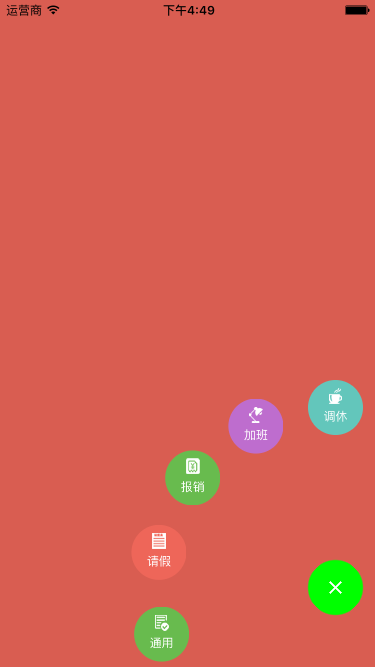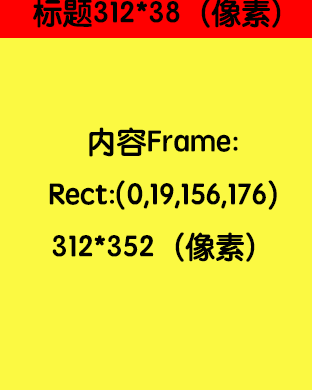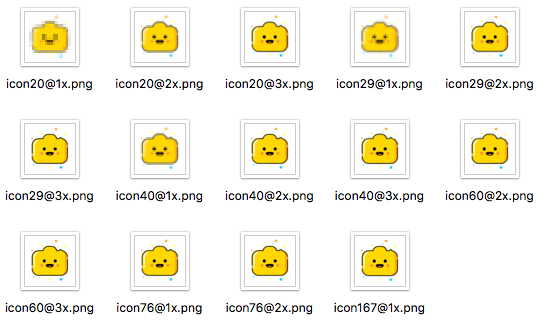動態修改UINavigationBar的背景色
這是我們最終想要得到的效果:
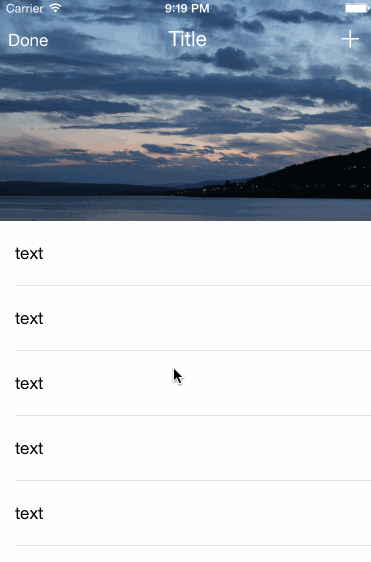
思路
在UISrollView的delegate方法
- (void)scrollViewDidScroll:(UIScrollView *)scrollView
中根據當前的contentOffset更新navigationBar的backgroundColor即可,so easy~
開動
那麼我們來看看apple為我們提供了哪些API來設置navigationBar的顏色。
首先想到的是最常用的[UINavigationBar appearance],我們一般會在AppDelegate中使用它對navigationBar進行統一的設置。但是如果試一下,會發現在scrollViewDidScrollView中調用它並不能動態地改變navigationBar的顏色,原因可以看一下Apple的doc:
Use the UIAppearance protocol to get the appearance proxy for a class. You can customize the appearance of instances of a class by sending appearance modification messages to the class’s appearance proxy.
但是:
iOS applies appearance changes when a view enters a window, it doesn’t change the appearance of a view that’s already in a window. To change the appearance of a view that’s currently in a window, remove the view from the view hierarchy and then put it back.
所以換一條路,直接修改UINavigationBar的backgroudColor:
- (void)scrollViewDidScroll:(UIScrollView *)scrollView
{
UIColor *color = [UIColor blueColor];
CGFloat offsetY = scrollView.contentOffset.y;
if (offsetY > 0) {
CGFloat alpha = 1 - ((64 - offsetY) / 64);
self.navigationController.navigationBar.backgroundColor = [color colorWithAlphaComponent:alpha];
} else {
self.navigationController.navigationBar.backgroundColor = [color colorWithAlphaComponent:0];
}
}結果卻是……
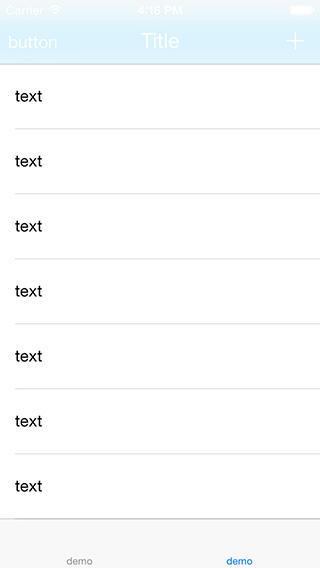
仔細觀察,會發現navigationBar的高度是44,它的上方是statusBar,而且,navigationBar的上面還有一個未知的View……到底Apple是怎麼實現UINavigationBar的呢,讓我們一探究竟!
在xcode的頂部菜單欄找到Debug > View Debugging > Capture View Hierarchy:
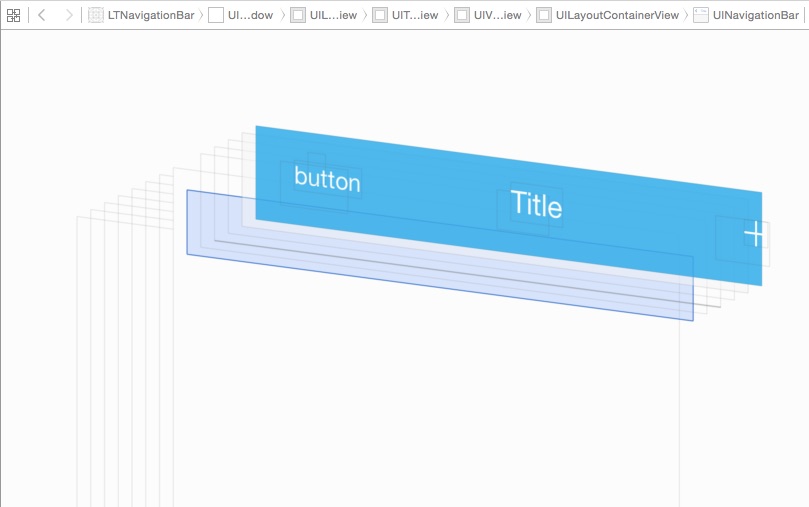
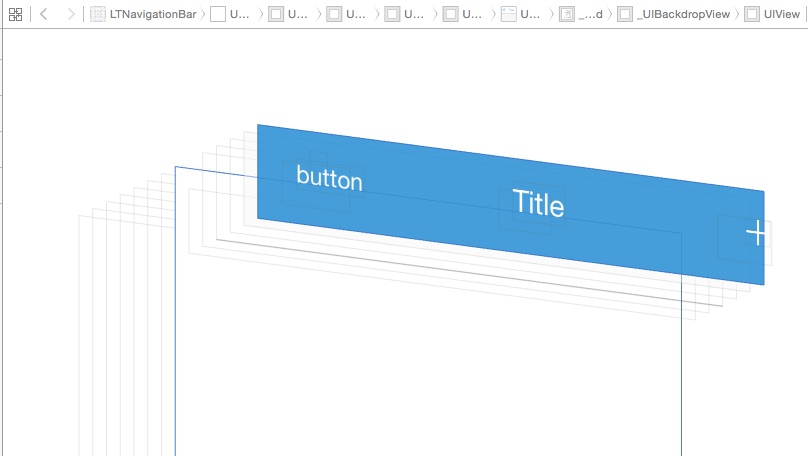
原來UINavigationBar上有一個_UIBackDropView,正是它決定了navigationBar的背景色。
那麼我們是不是可以修改它的顏色呢,趕緊打開UINavigationBar.h,找了一圈,
既然沒有public的API,我們只能hack了!
Hack
我們的思路很簡單,參照Apple的實現,在navigationBar的view hierarchy中插入一個view,通過它來控制在navigationBar的backgroundColor。
考慮到繼承UINavigationBar使用起來會非常不便,我們決定用Category來實現,首先定義我們的category:
@interface UINavigationBar (BackgroundColor) - (void)lt_setBackgroundColor:(UIColor *)backgroundColor; @end
實現:我們使用associatedObject將overlayView動態地綁定到UINavigationBar的instance上,當調用lt_setBackgroundColor的時候,我們只要更新這個overlayView就行啦~
@implementation UINavigationBar (BackgroundColor)static char overlayKey;
- (UIView *)overlay
{ return objc_getAssociatedObject(self, &overlayKey);
}
- (void)setOverlay:(UIView *)overlay
{
objc_setAssociatedObject(self, &overlayKey, overlay, OBJC_ASSOCIATION_RETAIN_NONATOMIC);
}
- (void)lt_setBackgroundColor:(UIColor *)backgroundColor
{ if (!self.overlay) {
[self setBackgroundImage:[UIImage new] forBarMetrics:UIBarMetricsDefault];
[self setShadowImage:[UIImage new]]; // insert an overlay into the view hierarchy
self.overlay = [[UIView alloc] initWithFrame:CGRectMake(0, -20, [UIScreen mainScreen].bounds.size.width, 64)];
[self insertSubview:self.overlay atIndex:0];
} self.overlay.backgroundColor = backgroundColor;
}@end最後在scrollViewDidScroll中,我們就可以動態地修改UINavigationBar的backgroundColor了:
[self.navigationController.navigationBar lt_setBackgroundColor:[color colorWithAlphaComponent:alpha]];
完整的代碼在這裡
寫在最後
UINavigationBar是一個比較特殊的view,它被系統高度集成,有時候定制起來並不那麼方便。其實這個demo完全可以用另外一種方法實現,就是不用UINavigationBar,自己畫一套UI。
很多時候我們都會發現系統原生控件出現一些預料之外的行為,那麼打開view debugging,找出原因,然後解決它!
- 上一頁:Xcode集成POD教程
- 下一頁:天貓Web架構
- iOS 10 應用相機相簿閃退的bug修改辦法
- IOS 靜態方法與動態方法詳解
- IOS 通過tag刪除動態創建的UIButton
- iOS 動態改變UINavigationController的顏色和透明度
- iOS8越獄後修改OpenSSH通道密碼圖文教程[多圖]
- 蘋果iphone手機上修改deb解包打包圖文教程[多圖]
- iPhone 6s/6s Plus動態壁紙Live Photos導入導出圖文教程[多圖]
- Live Photos軟件怎麼使用? Live Photos動態屏保牆紙視頻教程[多圖]
- iOS9.2減弱動態效果有福利 新特性值得你升級一試[圖]
- iPhone7就寢功能怎麼用?iPhone7就寢功能怎麼修改[圖]
- 蘋果有鎖機移動聯通4G破解運營商修改圖文教程[多圖]
- iPhone修改運營商圖標 最新方法適用iOS5.0以上
- iPhone手機運營商標志修改教程 輕松去除移動聯通
- 蘋果iTunes下載提速秘笈之修改Hosts文件
- iphone4s怎麼修改程序名稱


